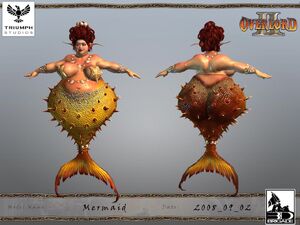Before completely rolling over with side-splitting laughter, continue on with an open mind as to why and how such a mis-sighting could have actually happened. It has been documented over time that sailors across cultures thought the aquatic mammals were young women of the sea. No way, you say! You must keep in mind that sailors are often at sea for extended periods of time without the presence of female company. To witness the somewhat majestic, regal appearance of a manatee moving and flipping its tail gracefully about the water just might conjure up the image of a mermaid. This has led to the inspiration of many mermaid legends.
One such account is reported on this day in 1493 as attention focuses upon Christopher Columbus...
This Day in History: January 9, 1493
 | ||
| Crystal River, Florida Manatee, USA Photo #9 by ASCOM Prefeitura de Votuporanga |
 |
A Mermaid by John William Waterhouse
Source: en.wikipedia.org |
Comparing the two photographs above makes one wonder how a 12-ft, 1200 pound manatee could be mistaken for a mermaid. Then, taking into account the picture of the overweight siren below just might create a totally different perspective.
These mermaids belong to the order Sirenia,
which is named after the Sirens of Greek mythology
(even though the Sirens were originally part woman and part bird,
they later became associated with mermaids).
which is named after the Sirens of Greek mythology
(even though the Sirens were originally part woman and part bird,
they later became associated with mermaids).
Back to Columbus mistaking manatees for mermaids...
 |
| The voyages of Christopher Columbus. Source: en.wikipedia.org |
In 1493, while anchored in the Caribbean, he reportedly saw three "mermaids" swimming in the water. Columbus described what he saw, or thought he saw, in his journal. The journal entry has been transcribed varying in wording to some degree: "(the mermaids) not half as beautiful as they are painted," "the mermaids were not as pretty as imagined," and "mermaids were by no means as beautiful as depicted in folk tales."
How could this mistake even possibly be made?
Let's pause for a moment and give a little credit to the possibility of this misinterpretation being legitimate. Keep in mind that for the most part, manatees remain underwater where visibility reveals a back and tail with no dorsal fin.
Isn't this much the same as how a mermaid is depicted? If a manatee's head did surface so that a sailor could see the vaguely human-like eyes and face in the right light, could this add further to the illusion?Then, on top of all that, the female manatees also have two breasts, one under each armpit. Remember, as mentioned in the beginning, it was not unusual for sailors to be aboard ship for months and months at a time. Living conditions did not carry any bragging rights and not only were men starved for food but also female companionship.
That's not all either...
 |
| Are mermaids good or bad? |
It is your decision to discern what you think is fact vs. fiction. However the outcome, don't you agree at times history can be totally fascinating? Would you have ever thought to make a connection of Columbus to mermaids and manatees?
Do you believe mermaids exist or do you trust your instincts to only the manatee?



No comments:
Post a Comment